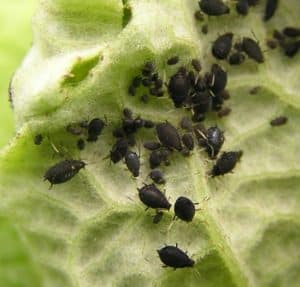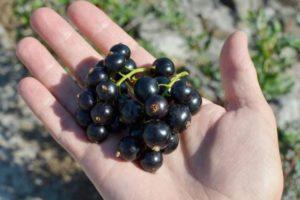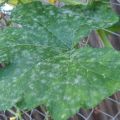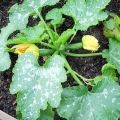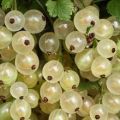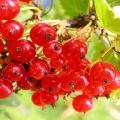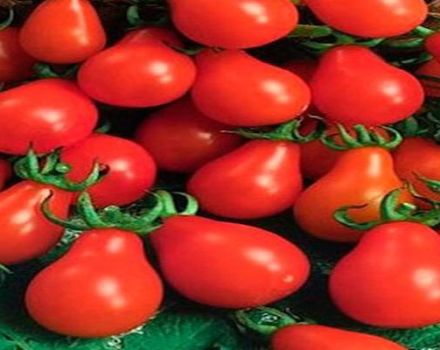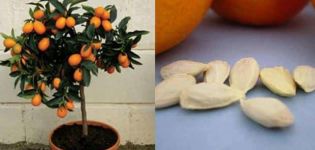Causes of white bloom on currant leaves, how to process and what to do for treatment
In the summer, the activity of the fungus that causes powdery mildew often increases. The disease affects fruit shrubs, and the first sign is the appearance of a white bloom. On currants, it forms on the inside of the leaves, covers young shoots, and over time the infection spreads to the berries, which is fraught with a complete loss of yield. In the absence of a fight against the pathogen, the affected bushes freeze in winter.
Causes of white plaque
Some gardeners often do not understand why mold has appeared on the currants, they do not know that it is very dangerous with the loss of berries. Powdery mildew development is promoted by:
- Combination of high humidity with high temperatures.
- Thickened planting of bushes.
- Lack of light for currants.
- Application of a large amount of nitrogen fertilizers.
The disease develops when, when shortening the shoots, the sections are not processed, spores easily fall into them. The plant becomes infected with powdery mildew if planted next to a diseased bush.
White bloom often occurs on black currants, which, unlike red ones, are not resistant to fungal infections. Powdery mildew spreads quickly, passes from leaves to fruits, berries turn gray, plaque becomes brown.
Who is the causative agent
The spheroteka fungus, which waits for the cold season on the stems and in the apical buds of fruit shrubs, begins to multiply under favorable conditions, spores are carried by insects and wind to the leaves and ovary of pumpkin crops, grapes, gooseberries.
The pathogen multiplies with the help of conidia that get on other shrubs, and sexually, when the spores of the parasite are released from its body in spring.
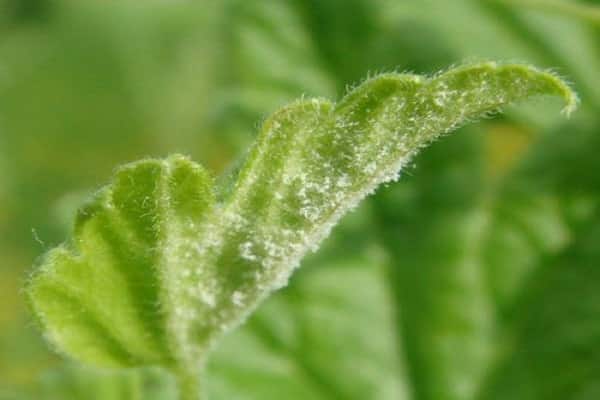
Symptoms of defeat
The first sign indicating a fungal infection of the currant is that a whitish bloom has appeared on the bushes. When powdery mildew spreads, leaves curl and wither. Due to the violation of photosynthesis, they lose their green color, and then fall off, the ovary crumbles. If ripe berries are affected by the disease, a brown bloom forms on the fruits.
What is the danger for the currant garden
Spores of the fungus do not die and in severe frost, in the spring, microorganisms begin to multiply. The infection spreads from one bush to another by the wind, birds and insects. Sick plants weaken, very poorly withstand the winter.If the currants are covered with bloom, the berries disappear.
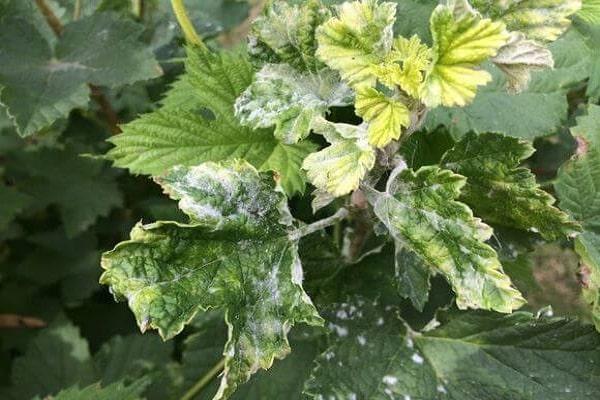
Preparations and remedies for powdery mildew
Infection of shrubs occurs at great speed. You can save the plant if, when a plaque appears, immediately engage in the fight against the fungus. If treatment is delayed, problem shoots are cut off, leaves are burned and they are selected with which to process the culture.
Folk ways to combat white bloom
Not everyone wants to use chemicals to cope with currant disease. At the beginning of its appearance, summer residents 2 tsp. rapeseed oil is poured into a bucket of water. The result of treating the shrub with such a remedy is noticeable after 10-14 days, the plaque disappears, since the spores die.
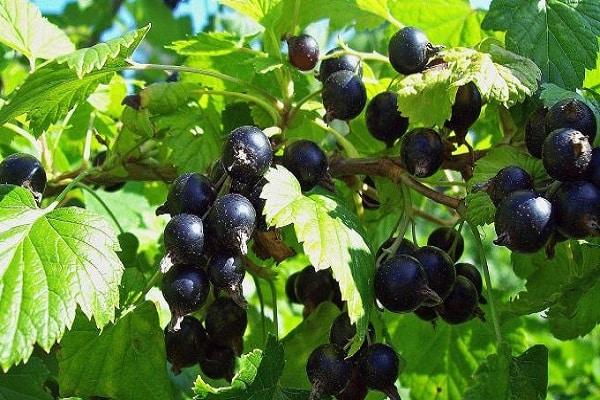
In the fight against fungal infection, wood ash is used. A kilogram of this organic substance is infused in 10 liters of water. After a week, the solution is filtered and mixed with crushed or liquid laundry soap and the affected bush is sprayed. The sediment is again combined with water and poured under the currant root.
When the first signs of infection with a fungus appear, a soda solution is used, with which the plant is literally washed. The composition is prepared from 2 tablespoons of the substance, the same amount of grated soap and 10 liters of water.
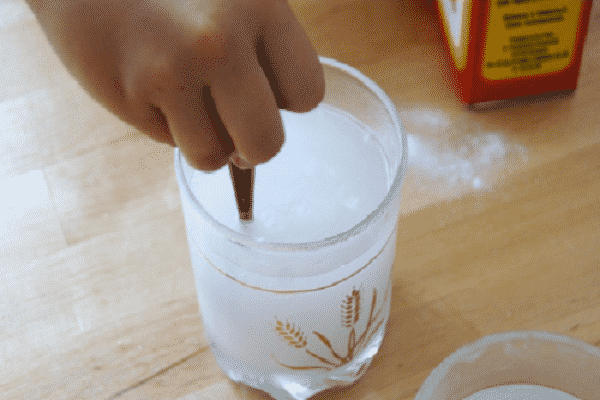
If the weather is dry outside, and rain is not expected in the near future, the currants are treated with milk whey or kefir, but not with a concentrated solution, but half diluted in water.
The bushes are sprayed with a composition prepared from 10 ml of iodine and 10 liters of liquid. Fungi do not multiply in an acidic environment, and alcohol disinfects the leaves from spores. Pathogens do not like the infusion of arrows or garlic cloves.

Chemicals
With a significant damage to the shrub with powdery mildew, using only folk methods, it is impossible to cure the plant, and chemical preparations have to be used. There is poison in such products, they must be combined with water strictly following the instructions. It is necessary to spray the currants with a spray bottle so that the composition is distributed evenly and falls on all parts of the plant.
Processing is performed not once, but several times:
- during snow melting;
- before bud break;
- before and after flowering;
- late autumn.
Sulfur-containing formulations are less toxic than other chemicals used to eliminate powdery mildew. The berries can be consumed after spraying, but it is better to wait at least a week.
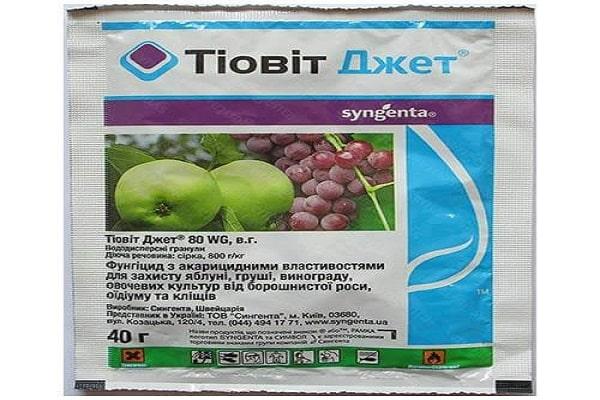
The optimum temperature for processing currants with Tiovit Jet and colloidal sulfur is 20-30 °, at 35 the shrub can get burned.
Bordeaux liquid helps to cope with fungi, which is prepared by dissolving 10 grams of copper sulfate in a bucket of water. The first time the currants are sprayed, wetting the ground near it, until the buds awaken. Processing is performed three times per season, constantly changing the preparations, since the fungi quickly get used to the composition.
Systemic fungicides that penetrate the tissues of the bush and stop the development of the disease effectively cope with the infection.
When using preparations "Topaz", "Skor", "Agrolekar", "Fitosporin-M", "Raek" berries can be consumed no earlier than 2 weeks after spraying.
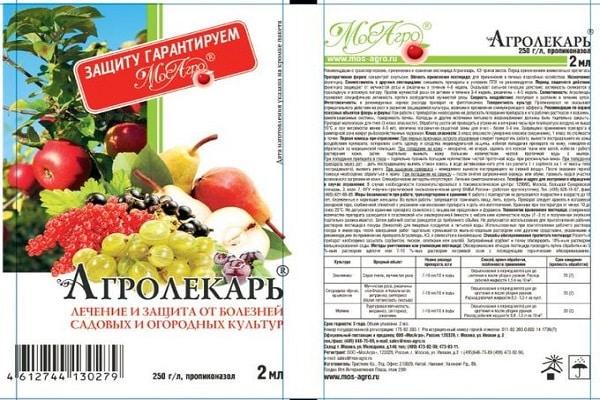
Mechanical methods
With the appearance of plaque in an insignificant amount, when only a few sheets are affected by the infection, it is possible to do without chemical treatment.
Thickened plantings contribute to the development and spread of powdery mildew. If the bushes are located close to each other, the diseased plant is dug up. Shoots infected with spores are cut off, the leaves are torn off and all this is burned.
Before breaking up a plot for currants, the earth is disinfected with fungicides.
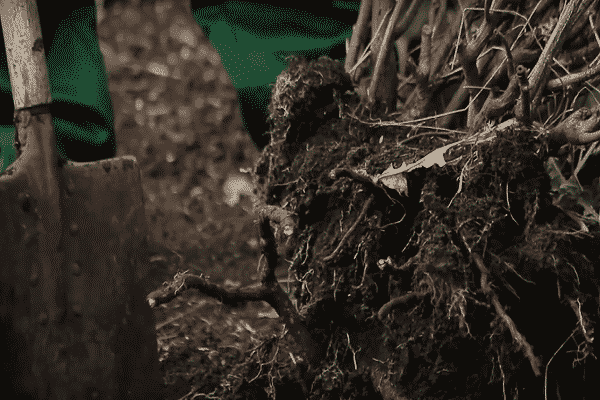
How to handle correctly
Novice gardeners, having bought the drug, may not know what to do before spraying the shrub. The plant must be prepared for the procedure.
Plaque on berries
Fungal spores are not only carried by the wind and birds, the infection passes from the leaves of the currant to the fruits, when infected they turn white, but over time they become brown and disappear. Affected berries are necessarily picked, and healthy ones are sprayed with the bush.
On shoots and branches
In currants that are sick with powdery mildew, plaque forms over time on the stems and trunk. Such a bush is cut to the ground, cold water is directed to the plant under pressure. After that, together with the ground, they are sprayed with fungicides.
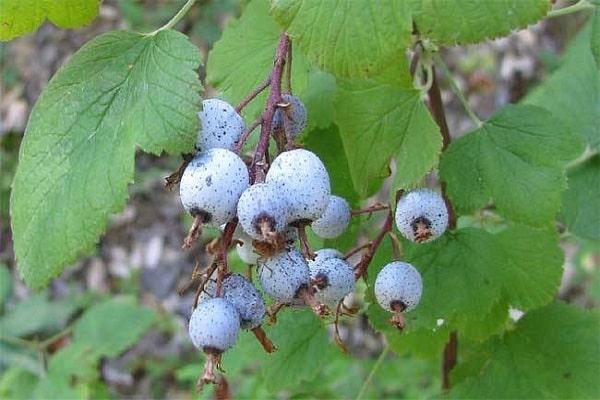
With a significant defeat of the shoots, the currants are dug up and all branches are burned. Under diseased bushes, the top layer of soil is removed, mummified fruits are removed, in which harmful microorganisms like to winter.
On foliage
Powdery mildew quickly affects whole plantings of black currant, if the first signs are not immediately noticed. First, the fungus attacks the inside of the leaf plate, so not every summer resident who has recently grown a shrub can detect a problem.
Even experienced gardeners sometimes pay attention to the presence of plaque when it covers the outer parts of the leaf plate. In this case, folk remedies are not always effective, you have to use fungicides. Before the bush is sprayed with drugs, all the white leaves are cut off and burned.
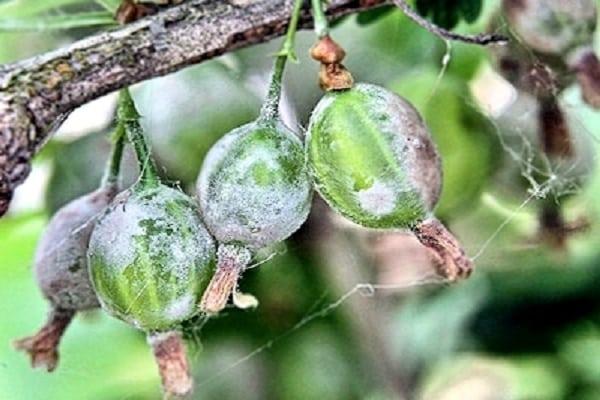
Prevention methods
To reduce the risk of infection of currants, seedlings for growing must be purchased in a nursery, it is worth choosing varieties that have been bred recently, since they are highly resistant to fungal infection.
To prevent powdery mildew, you must:
- Before planting, dip the young bushes in boiled water or Bordeaux liquid.
- Observe the requirements of agricultural technology.
- Do not leave weeds near the currants.
- Timely get rid of weakened shoots.
The branches on which plaque has formed must be cut off. You shouldn't grow currants in the same place for more than 10 years. In the spring, it is advisable to treat the bushes with a solution that is prepared from water and humus. Plants are sprayed with this composition when leaves and flowers appear.
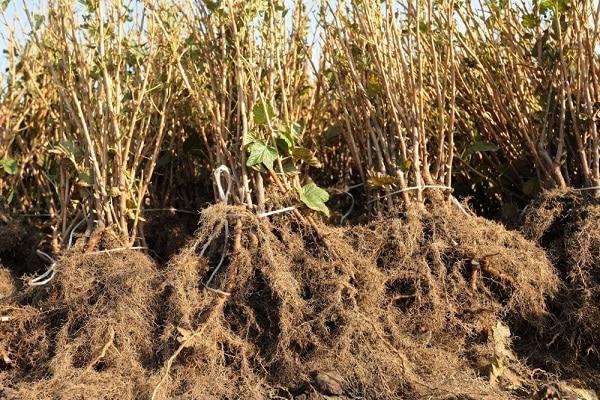
Disease resistant varieties
Fruit shrubs have suffered from powdery mildew for a very long time. In Russia, the disease has been fought since the beginning of the last century. Recently, breeders have been developing currant varieties that are immune to fungal infection. Gardeners are advised to purchase:
- The riddle is a fruitful shrub resistant to frost;
- Opening day - with large dark purple berries;
- Agate is a compact plant with straight shoots, created in Siberia.
The self-fertile Black Pearl hybrid is rarely affected by powdery mildew. This currant grows in different regions - from the North Caucasus to the Urals, pleases with fruits weighing up to 6 grams.
